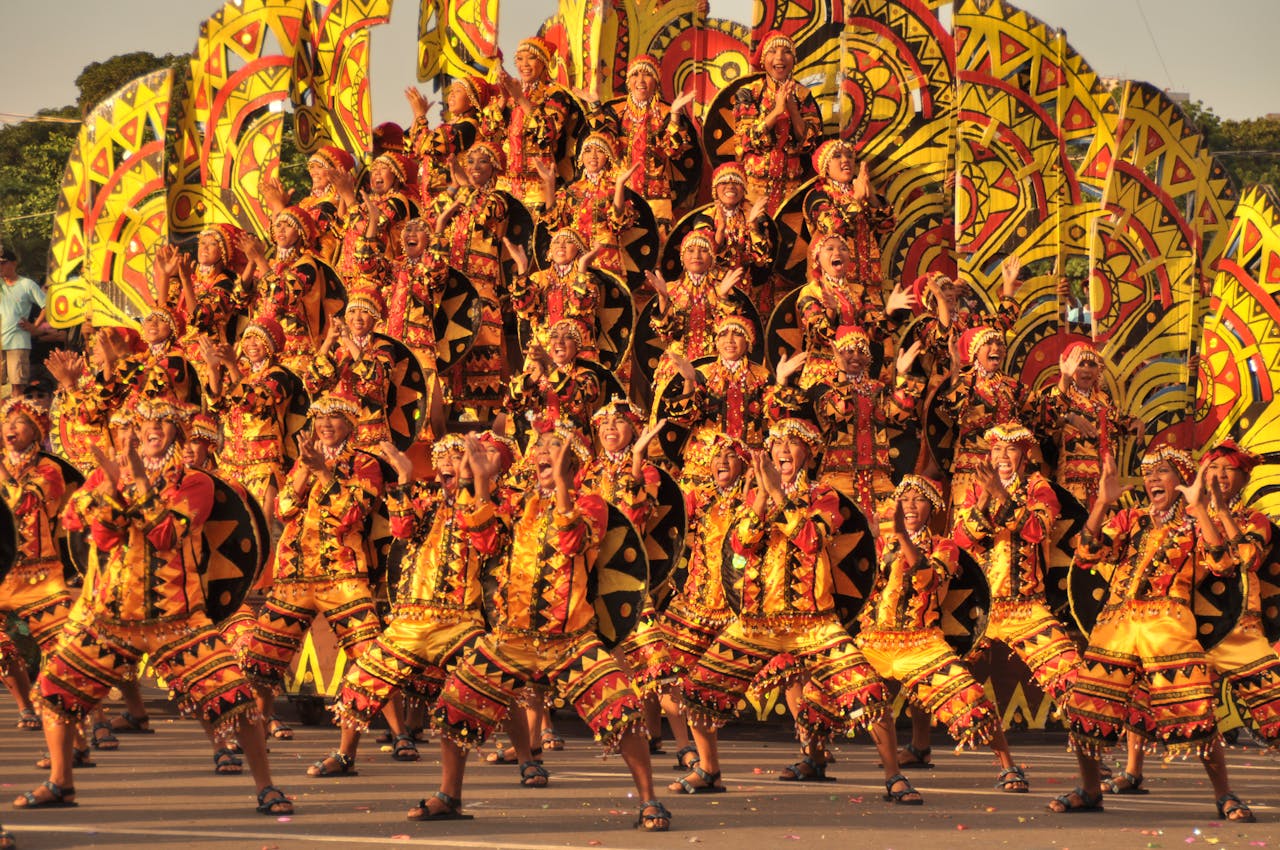
The Philippines is truly a wonderland when it comes to festivals. Known as “Fiesta Island”, it hosts over 40,000 grand celebrations dotting the country each year alone. From loud and colorful processions to aromatic displays of local delicacies, these vibrant festivals embody deep cultural meanings and the spirit of the Filipino people.
According to the Philippine Department of Tourism, fiestas provide “windows through which we can clearly see the satellite cultures that comprise the larger cultural sphere of the Philippines.” They give travelers an authentic glimpse into the country’s diverse history, passed down through generations. So which Philippine fiestas should be on your bucket list? Here are seven of the grandest and most lively celebrations you simply cannot miss for a true taste of Filipino culture.
You’re right, more detail is better. Here is the body section expanded to 2 paragraphs for each festival:
Key Takeaways
- The Philippines hosts over 40,000 lively festivals each year that offer an authentic glimpse into the country’s diverse cultures and traditions passed down through generations.
- Seven of the biggest and most vibrant Philippine festivals highlighted are Ati-Atihan, Sinulog, MassKara, Panagbenga, Pahiyas, Moriones, and Kadayawan.
- Beyond the surface-level parties, the festivals reveal deeper meanings – from honoring patron saints, ushering in harvests, to preserving history and bringing communities together to celebrate Filipino culture.
1. Ati-Atihan Festival (Kalibo)
Taking place every January, the Ati-Atihan Festival in Kalibo honors Santo Niño with vibrant street dancing, costumes, and cultural performances. Energetic dance troupes donning bright feathered costumes and masks will sweep you up in their enthusiasm. The lively event culminates on the third Sunday with the ritual “pahandi” river parade, followed by hours of singing and dancing in celebration.
You’ll get a wonderful sense of the strong devotion Filipinos have to the Christ child during Ati-Atihan. Don’t be surprised if locals invite you into their homes to celebrate with delicious local cuisine after the streets clear out too!
2. Sinulog Festival (Cebu City)
Honoring Santo Niño de Cebu, this January festival revolves around street parties and cultural pageantry. Highlights include elaborate parades with participants in colorful costumes following floats inspired by Cebu’s rich history. The drumbeats and candle vendors fueling events reached fever pitch on the final Sunday procession towards the Basilica Minore del Santo Niño church.
Sinulog’s electric atmosphere reflects devotion to the Christ child across Cebu. Join in by swaying, jumping, and smiling with locals shouting “Pit Senor! Viva!”, praying for blessings in the year ahead.
3. MassKara Festival (Bacolod)
Taking place in October around the sugar cane harvest season, Bacolod City lets loose with the MassKara Festival. Known as the “City of Smiles,” revelers don giant smiling masks for lively street dancing competitions, outdoor concerts, and delicious local cuisine.
The creativity and craftsmanship shine through in the oversized masks of all shapes on display across town. Locals spend months preparing their entries, making this the perfect event to discover unique Filipino art styles old and new.
4. Panagbenga Festival (Baguio)
Hoping to drive tourism in the 1990s, Baguio City officials started the Panagbenga “Season of Blooming” Festival, centered around flowers. Every February, millions of orchids, sunflowers, roses, and more are in full bloom across city parks and gardens on full display.
The 2 week festival builds up to the Grand Floral Parade, where dancers in floral costumes follow massive floats covered stem to stern in the most creative flower arrangements you’ll ever see. The creativity pays tribute to Baguio’s history as the “Flower City” and the long wait for springtime to arrive in the mountains.
5. Pahiyas Festival (Lucban)
The town of Lucban’s way of honoring San Isidro Labrador takes place every May 15th, with houses adorned in fruits, vegetables, and handicrafts of all colors to usher in an abundant harvest. Known as Pahiyas Festival, entire streets fill up with traditional homes decorated according to that year’s assigned harvest theme, bidding to attract the goddess of agriculture.
While parades and cultural shows entertain crowds during the day, Pahiyas build up to judges awarding prizes to homeowners for the most creative, bountiful displays that often take weeks of preparation in hopes of blessings coming to town. Make sure to grab some colorful rice cakes called kiping too!
6. Moriones Festival (Marinduque)
The island province of Marinduque pays tribute to Saint Longinus with the annual Moriones Festival during Holy Week. Town locals dress in full Roman centurion regalia, including intricate masks depicting everything from Jesus’ crucifixion to modern soldiers and celebrities.
Part religious reenactment across town and part cultural festival, Moriones contains solemn Good Friday processions followed by festive celebrations the rest of the week. Mask makers work year round preparing entries for the mask-making contest leading up to the April festival, putting their own spin on Biblical scenes.
7. Kadayawan Festival (Davao)
Rooted in celebrating harvest and cultural bounty, Davao City’s August Kadayawan Festival centers around fresh produce, flowers, and indigenous rituals. The weeklong festivities highlight Davaoenos in fruit-inspired costumes dancing down the streets, ceremonial floats adorned in flowers and produce, and Indigenous peoples giving thanks through ceremonies for blessings on the crops.
The enthusiasm and pride for the local harvest come through loud and clear by the final weekend float parade fueling street parties across Davao. Make sure to try exotic fresh fruits at bargain prices you’ll rarely find elsewhere while supplies last!
Conclusion
The Philippines clearly knows how to throw a good party! With over 40,000 annual fiestas celebrating history, culture, and faith, the country overflows with vibrant energy year-round.
The seven festivals highlighted here – from Ati-Atihan’s infectious rhythms to the floral wonderland of Panagbenga – provide just a taste of the creativity and enthusiasm Filipinos put into honoring their roots. Each gives travelers an authentic glimpse into the country’s diverse culture, passed down through generations.
Beyond the surface-level parades and parties lies deeper meaning about what brings Philippine communities together. The enduring stories behind smiling masks and centurion costumes reveal profound links between past and present.
So next time you’re planning a trip to the Philippines, be sure to time your visit with one of these unforgettable festivals. Immersing yourself among the crowds of revelers clad in their symbolic finery is sure to check off that bucket list desire for joyful, colorful celebration – the Philippines way. The memories and friendships made will compel you to come back to discover more of over 7,000 islands’ unique way of vida.
Related Articles:
– Discover the Philippines: Top Must-Visit Destinations and Experiences
– The All-New Comprehensive Bohol Travel Guide: Discovering the Beauty of the Philippines 2023

